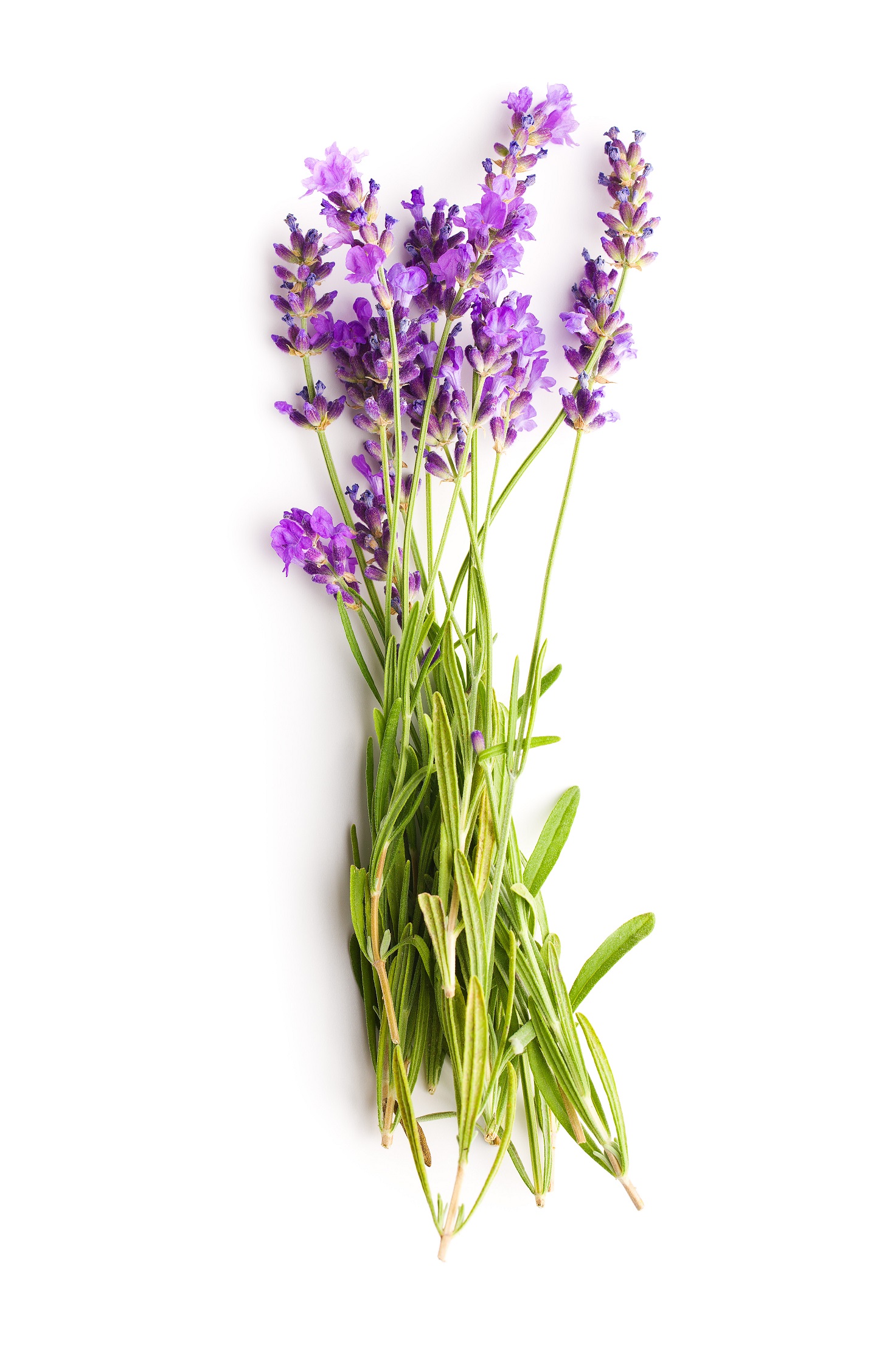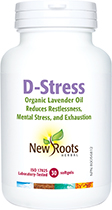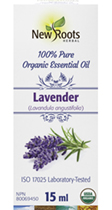Lavender for Back-to-School Stress
We have barely begun to enjoy a well-deserved summer rest, when we’re already
bombarded with insidious reminders from the media and store shelves that
turbulent times of the back-to-school season are soon to come. The start of the
school year is often, for children and parents alike, a stressful time of transition.
Here are some tips to sail through the back-to-school storm and on to smooth seas!
A multitude of methods exist for managing stress, but some are particularly effective, such
as that of cardiac coherence, which can reduce your cortisol level by 25–35%. This simple
technique of breathing and concentration allows the heart rate to drop in a span of a few
minutes to levels close to those obtained at rest without stress factors—so effectively, that
even French Air Force pilots use it. Remember the “3-6-5” technique: 3 times a day (or
during stress), 6 deep breaths per minute (5 seconds for each inhalation and exhalation),
for 5 minutes. This technique is extremely simple and life-saving!
Reducing fatigue while improving concentration and the ability to handle disruptive events sometimes requires only a few basic steps, like sufficient hydration and sleep. Exercise and the hormone balance it creates also contribute to better coping with daily troubles, as does a joyful, regular, and colorful diet! Organizing your agenda can also help you avoid unnecessary and stressful setbacks. New relationships at school can be disruptive, so work on your communication skills and listen empathetically to those around you. Faced with new events and people, keep an open heart and avoid withdrawal. If the blues set in, you can always tone your cheekbones with a comedy of your choice and end the evening with a warm, Epsom-salt bath.
Finally, to wrap up the antistress tips, nature offers us many plants to help quiet down, such as lavender.
Several studies clearly confirm the empirical knowledge of the medicinal properties of this plant, considered a panacea among herbal medicines. The unique mosaic of natural phytochemicals of its essential oil (EO) includes linalool and linalyl acetate, which are its main active compounds. Linalool has a soothing effect on smooth-muscle tissue by inhibiting the release of acetylcholine, a neurotransmitter that acts within the neuromuscular junction. It has also been demonstrated that lavender EO supports the activity of gamma-aminobutyric acid (GABA), the amino-acid neurotransmitter that regulates brain activity and relaxes the body and mind. Various studies have shown its calming effect on people in stressful situations: isolated, in hospitals, or exposed to anxiety-inducing videos. One of these studies demonstrated that as little as 80 mg/d of lavender EO regulates synaptic (nervous-system) functions in the hippocampus, a part of the brain linked to anxiety. In short, lavender essential oil is traditionally used to help relieve agitation and mild symptoms of mental stress and exhaustion. It is also a remedy that helps find a restful sleep, making it an ideal ally for easing back-to-school stress.

Many species of lavender exist, but the most efficient at calming remains true lavender (Lavandula angustifolia); broad-leaved lavender (Lavandula latifolia) is good for insect bites and burns; Spanish lavender (Lavandula stoechas) is a good anti-infective; and the lavandin hybrid (Lavandula × burnatii or × hybrida) seems more appropriate for contractures and muscular cramps.
Externally, you can diffuse true lavender to create a soothing environment and increase concentration: Put a few drops on your pillow before sleep, but also in your bath (20 to 30 drops mixed with an emulsifier) to release the day’s stress, or in an antifatigue foot bath. You quickly benefit from its relaxing effects with a few drops applied on the wrist face or on the solar plexus.
For internal use, true lavender EO is also available in handy softgels, often diluted in an organic extra-virgin olive oil—which can be taken safely, because it is well-tolerated at the recommended doses. Moreover, the famous Commission E (advisory council of the German Government) approved the internal use of true lavender EO for nervous agitation, insomnia, and digestive disorders. The recommended dosage is about 80 mg (equivalent to three drops), taken once a day when you need it, with food. A study showed that taking lavender EO softgels improved sleep as well as mental and physical wellbeing of people suffering from daily stressors, and another study showed it was as efficient as a commonly prescribed medicine for treating anxiety.
It is a natural cure that will, for sure, resolve the tensions that sometimes create a knot in your stomach, and you will be able to easily solve lunchbox problems or to better manage the evening’s tedious homework… As you know, rain is followed by good weather, so rest assured: A few days—or, at worst, weeks—will be enough for back-to-school routine to impose itself, and the small stresses from the beginning will fade as they came. But in the meantime, use any of these tricks to bring back inner peace; this is always possible with a simple little lavender softgel!
References
- Baudoux, D. Aromathérapie. Malakoff : Dunod Éditeur, 2017, 544 p., ISBN 978-21007-54557.
- Blumenthal, M., A. Goldberg, et J. Brinckmann, éds. Herbal Medicine : Expanded Commission E Monographs. Austin : American Botanical Council / Integrative Medicine Communications, 2000, 534 p., ISBN 978-09670-77215.
- Braden, R., S. Reichow, et M.A. Halm. « The use of the essential oil lavandin to reduce preoperative anxiety in surgical patients. » Journal of Perianesthesia Nursing, Vol. 24, N° 6 (2009): 348–355.
- Cha, J.H., S.H. Lee, et Y.S. Yoo. « [Effets de l’aromathérapie sur les modifications du système nerveux autonome, la vitesse de l’onde de pouls aortique et l’indice d’augmentation aortique chez les patients présentant une hypertension artérielle essentielle » [Effects of aromatherapy on changes in the autonomic nervous system, aortic pulse wave velocity and aortic augmentation index in patients with essential hypertension] (article en coréen). Journal of Korean Academy of Nursing, Vol. 40, No. 5 (2010): 705–713.
- Hoya, Y., et al. « The use of nonpharmacological interventions to reduce anxiety in patients undergoing gastroscopy in a setting with an optimal soothing environment. » Gastroenterology Nursing, Vol. 31, N° 6 (2008): 395–399.
- Hwang, J.H. « [Les effets de la méthode d’inhalation utilisant des huiles essentielles sur la pression artérielle et les réactions au stress des clients souffrant d’hypertension essentielle] » [The effects of the inhalation method using essential oils on blood pressure and stress responses of clients with essential hypertension] (article en coréen). Taehan Kanho Hakhoe Chi, Vol. 36, N° 7 (2006): 1123–1134.
- Kasper, S., et al. « Silexan, an orally administered Lavandula oil preparation, is effective in the treatment of “subsyndromal” anxiety disorder: A randomized, double-blind, placebo-controlled trial. » International Clinical Psychopharmacology, Vol. 25, N° 5 (2010): 277–287.
- Kritsidima, M., T. Newton, et K. Asimakopoulou. « The effects of lavender scent on dental patient anxiety levels: A cluster randomised-controlled trial. » Community Dentistry and Oral Epidemiology, Vol. 38, N° 1 (2010): 83–87.
- Shiina, Y., et al. « Relaxation effects of lavender aromatherapy improve coronary flow velocity reserve in healthy men evaluated by transthoracic Doppler echocardiography. » International Journal of Cardiology, Vol. 129, N° 2 (2008): 193–197.
- Schuwald, A.M., et al. « Lavender oil-potent anxiolytic properties via modulating voltage dependent calcium channels. » PLoS One, Vol. 8, N° 4 (2013): e59998.
- Toda, M., et K. Morimoto. « Effect of lavender aroma on salivary endocrinological stress markers. » Archives of Oral Biology, Vol. 53, N° 10 (2008): 964–968.
- Woelk, H., et S. Schläfke. « A multi-center, double-blind, randomised study of the Lavender oil preparation Silexan in comparison to Lorazepam for generalized anxiety disorder. » Phytomedicine, Vol. 17, N° 2 (2010): 94–99.
- Passeport Santé.Net. Lavande. · https://www.passeportsante.net/fr/Solutions/PlantesSupplements/Fiche.aspx?doc=lavande_ps · Mis à jour 2015-07.
 Guillaume Landry, MSc, Naturopath
Guillaume Landry, MSc, Naturopath
A native of the Jura mountains of eastern France, he shares
his passion for the wonders of nature and natural medicine.

 Stores
Stores

